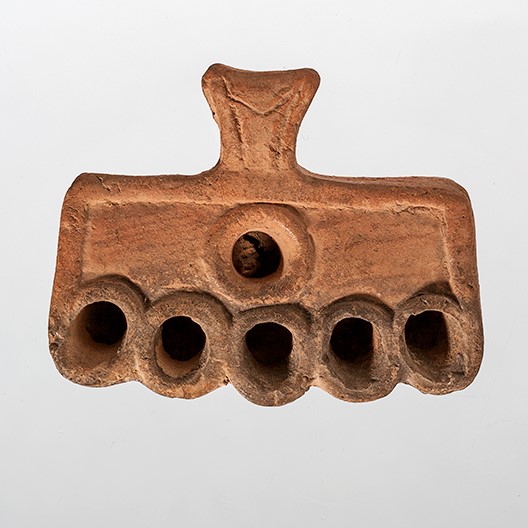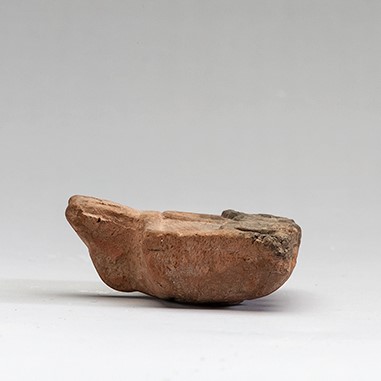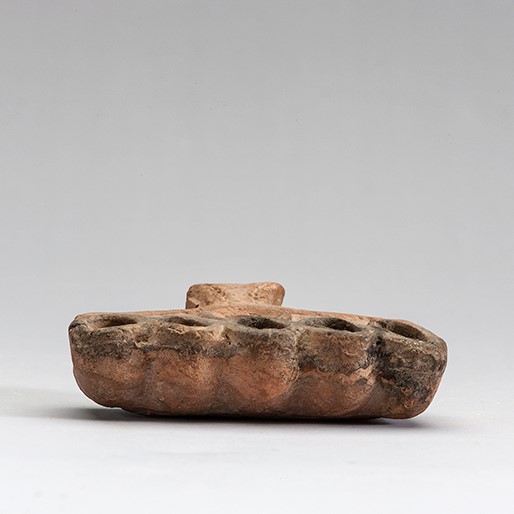Acquisition number: 1986.04
Smooth pinkish-brown clay with some traces of mica. The lamp has a basic box shape with five linked spouts for the wicks along the front. There is a slightly raised spurred handle at the back decorated with outlining grooves along the sides and with a vertical groove up the outer face. Each spout is outlined with a ridge and there is a raised edge to the circular filling hole and around the boundary of the upper face. There is a rectangular groove on the underside. The lamp was assembled from moulds for the upper and lower halves.
Title: Small multiple-wick lamp - 1986.04
Acquisition number: 1986.04
Author or editor: J.R. Green
Culture or period: Romano-Egyptian.
Date: Second half 1st century BC.
Material: Clay - Terracotta
Object type: Lamps - Terracotta
Dimensions: 64mm (w) × 12mm (h)
Origin region or location: Egypt
Display case or on loan: 11
Keywords: Roman, Republic, Romano Egyptian, Lamp
Charles Ede Ltd (London), Antiquities 140 (1986) no. 17b (ill.).
1986.04
Small multiple-wick lamp
Purchased. Max. width 6.4cm; max. ht excl. handle 1.2cm
Intact and in good condition. There are plentiful traces of burning about the spouts.
Smooth pinkish-brown clay with some traces of mica. The lamp has a basic box shape with five linked spouts for the wicks along the front. There is a slightly raised spurred handle at the back decorated with outlining grooves along the sides and with a vertical groove up the outer face. Each spout is outlined with a ridge and there is a raised edge to the circular filling hole and around the boundary of the upper face. There is a rectangular groove on the underside. The lamp was assembled from moulds for the upper and lower halves.
Of Egyptian manufacture and datable to the first century BC, probably its second half.
Box-shaped lamps appeared already in Ptolemaic Egypt in the second century BC and steadily became more common. They were a convenient and compact means of providing more efficient illumination, and they were at the same time simple to manufacture and so were doubtless inexpensive. They must, however, have consumed oil at a relatively rapid rate (especially from those with such a small body as this one), and it is interesting that this style of lamp was not taken up with any enthusiasm in other parts of the Hellenistic and Roman worlds. Our lamp has a good counterpart in one in Toronto, J.W. Hayes, Ancient Lamps in the Royal Ontario Museum I (1980) 39 no. 188, pl. 19, and another in D.M. Bailey, A Catalogue of the Lamps in the British Museum, iii, Roman Provincial Lamps (London 1988) no. Q 1972, pl. 37. It too is described as having brown micaceous clay.
Charles Ede Ltd (London), Antiquities 140 (1986) no. 17b (ill.).


